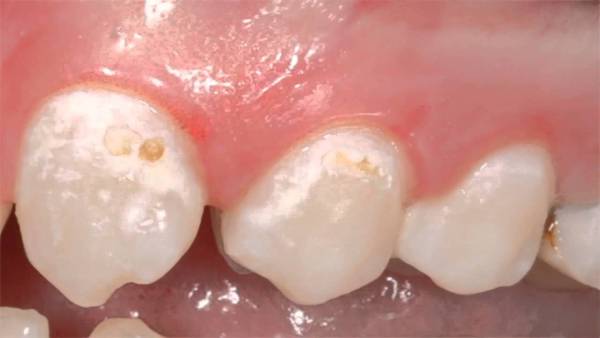Dental erosion: causes and solutions
- Biodental Tournai
- Jul 5, 2024
- 3 min read
Our modern societies put great strain on our mouths and teeth. Access to instant food is frequent, sugary and acidic foods are all factors that attack tooth enamel and weaken it. An unsuitable diet can lead to gastric problems promoting gastroesophageal reflux.
Some people have strong enamel and saliva that protects and combats acidity. Others have used suitable toothpastes loaded with minerals which protect against attacks and have maintained good food hygiene throughout their lives.
But this is not the case for the entire population, and sometimes the factors triggering erosion come together, which leads to very alarming situations of demineralization of the enamel and erosion , in other words wear .
How do I know if I have demineralization or erosion?
Here is a non-exhaustive list of signs that could lead us on the trail of erosion:
If you are prone to very frequent cavities (at least 2 or 3 new cavities discovered every year).
If the enamel of your teeth has stains at the necks of the teeth. In the early stages, the spots are whitish. In more advanced stages, the spots first turn yellow, then brown and finally black.
If your teeth are hypersensitive to cold, heat, sugar.
If your front teeth are brittle at the edges, with transparent areas , and you have noticed that they have shortened over time.
If you suffer from severe gastroesophageal reflux disease that is untreated or treated late , you most likely have demineralization or dental erosion.
All of these elements are the diagnostic leads that the dentist looks for during an oral examination.
What is enamel demineralization?
Enamel is in permanent exchange with saliva: this is the process of demineralization and remineralization. Saliva contains minerals and depending on the pH of the mouth, exchanges take place between enamel and saliva. Saliva with an acidic pH will “tear” the minerals that constitute it from the enamel, while saliva with a neutral pH will reattach the minerals to the enamel.

When the pH is normal, exchanges take place normally and the results are rather favorable. Minerals attach to tooth enamel.
When the pH is very regularly acidic , exchanges no longer only take place in one direction: from the enamel to the saliva. The minerals no longer attach to the enamel. The enamel loses its minerals and destructures. It becomes porous and fragile.
How to avoid demineralization?
By adopting a healthy, balanced diet and avoiding “snacking”. This is called “food hygiene” . In addition, subjects with gastroesophageal reflux must treat their pathology to avoid acidity.
Finally, you should absolutely avoid abrasive toothpastes that are poor in minerals. These are toothpastes that promise white teeth, “low-end” toothpastes and “fluoride-free” toothpastes. Your dentist can advise you on the right toothpastes to adopt.
How to provide minerals?
Minerals are contained in food and quality toothpastes . A subject who does not present risk factors can be satisfied with a natural intake thanks to their diet and brushing.
For a subject with risk factors, it is essential to use so-called “ remineralizing ” toothpastes.
When demineralization is severe, then it is recommended to perform fluoridation .
The solution: fluoridation?
Fluoridation is a therapeutic technique to significantly bring minerals to the surface of the teeth in order to remineralize the enamel.

Clear aligners are custom designed to the shape of your teeth, and fluoridation gel is placed inside the aligners and on the surface of the teeth. The trays are worn for a duration established by the dentist, daily.
Intensive initial fluoridation can be done for a period of 3 weeks , and continued several times a year.
Fluoridation can also be done for prevention , even if few signs are visible on the enamel but we know that the ground is fragile (hypersensitivity, consumption of sodas, very frequent cavities, reflux, etc.). Fluoridation is effective against dental hypersensitivities.
The fluoridation gel contains phosphate, calcium and fluoride ions.
How can we definitively repair what has been “lost”?
In severe cases of chemical erosion, a thickness of enamel has been lost on all of the teeth. Often, people complain of teeth that have become shorter during life, fragile, hollow and with transparent and brittle edges. In addition to the aesthetic deficit, chewing may be more difficult. Wear and tear is accelerating and the situation is becoming worrying.
In this typical case of severe and progressive chemical erosion, we use covering techniques using overlays and ceramic veneers in order to raise the height of the teeth and protect them in the long term from acidity. In fact, ceramic allows teeth to be reconstructed and aesthetics restored. Ceramic does not fear acid erosion. Teeth are kept vital.



















Comments